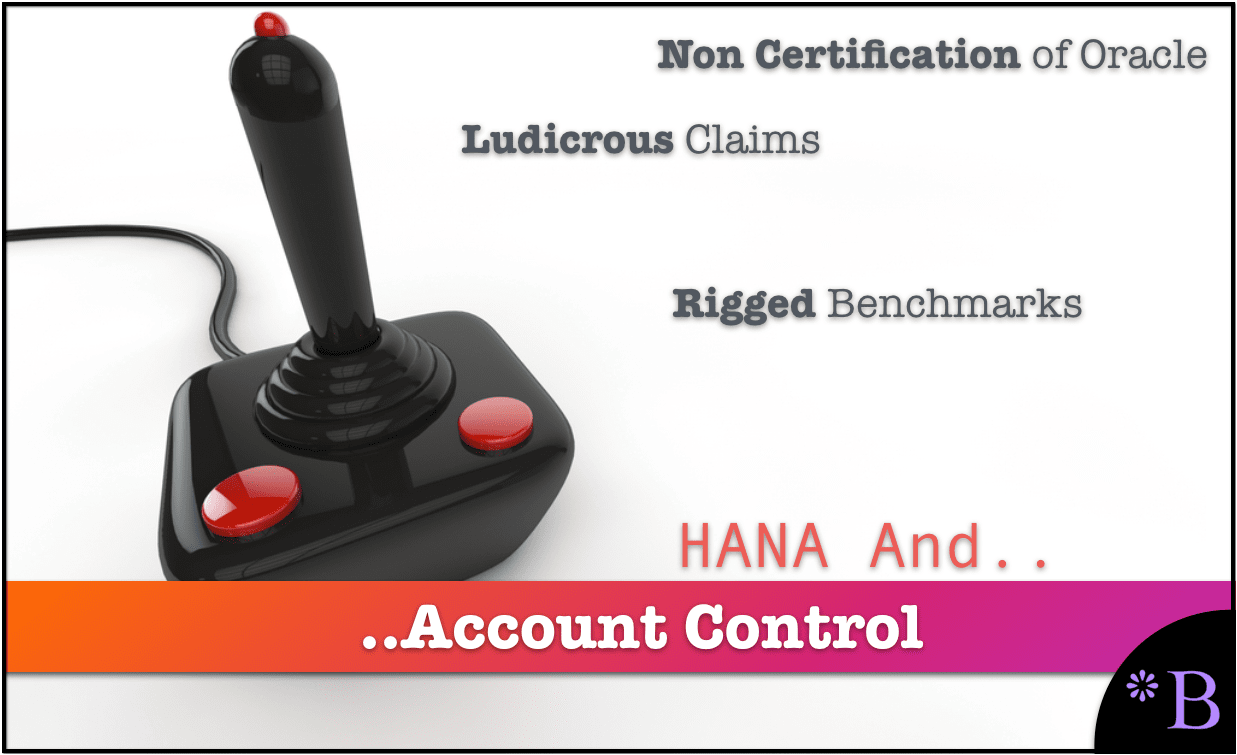How SAP’s HANA Is Part of A Strategy to Replace Oracle
Executive Summary
- SAP introduced HANA in order to use its application business to displace Oracle from the database business on SAP accounts.
- This is exactly as Oracle works to push into the application layer.

Introduction
In this article, we will explain how HANA is part of a strategy to replace Oracle that has nothing to do with any customer benefit and is about account control.
Our References for This Article
If you want to see our references for this article and other related Brightwork articles, see this link.
Notice of Lack of Financial Bias: We have no financial ties to SAP or any other entity mentioned in this article.
- This is published by a research entity, not some lowbrow entity that is part of the SAP ecosystem.
- Second, no one paid for this article to be written, and it is not pretending to inform you while being rigged to sell you software or consulting services. Unlike nearly every other article you will find from Google on this topic, it has had no input from any company's marketing or sales department. As you are reading this article, consider how rare this is. The vast majority of information on the Internet on SAP is provided by SAP, which is filled with false claims and sleazy consulting companies and SAP consultants who will tell any lie for personal benefit. Furthermore, SAP pays off all IT analysts -- who have the same concern for accuracy as SAP. Not one of these entities will disclose their pro-SAP financial bias to their readers.
What is SAP’s Integrated Strategy for HANA and S/4HANA, and How Does It Purge Oracle?
Because of SAP’s confusing naming, it is still necessary to differentiate between S/4HANA and HANA.
- HANA is SAP’s first serious foray into databases.
- S/4HANA, on the other hand, is the ERP system. S/4HANA only works with HANA, breaking with the previous tradition of SAP applications being open to different database vendors.
- HANA is not obligatory for any other SAP application other than S/4HANA. However, SAP strongly leans on its customers, mostly through providing inaccurate information, to move to HANA for many other SAP applications.
SAP has had a few other databases they owned through the years, like Max DB, but these were very lightly sold. SAP purchased Sybase several years ago. However, it has not been able to sell many Sybase databases, and the Sybase acquisition has been a washout, with the Sybase product seen as quite dated. SAP is doing very little to keep the Sybase database line up to date. By trying to force HANA into Sybase accounts, they damaged their relationships in the core Sybase financial sector. They may of that customer switched to Microsoft SQL Server, which is based on Sybase. It is a feature of the controlled IT media that the Sybase acquisition’s horrible outcome has not mostly uncovered. We covered this topic in the article How Accurate is SAP on the Sybase Acquisition.
A Major Change in Strategy
It is difficult to overemphasize what a change in strategy HANA is for SAP. SAP used to be based around a system that, as with most application vendors, is open to a variety of different commercial databases (although not open source databases).
SAP has very firmly based its strategy around HANA. The pricing for HANA is quite unusual, and it is vital to understand how to best purchase HANA.
The HANA Based Strategy to Remove Oracle from Accounts
SAP has an integrated strategy regarding HANA and S/4 HANA, which is related to removing the Oracle database from accounts. Brightwork Research & Analysis receives no income from any vendor outside of competitive intelligence work. And we have no conflicts regarding Oracle or SAP and do not care if either win or lose business (see the explanation at the end of the article). But on its merits, SAP has put forward no reasonable technology reason for any of the other major database vendors to be excluded from supporting S/4HANA. It is not that they have not put forward reasons, but upon inspection, none of these reasons check out.
SAP’s Refusal to Certify Any DB but HANA
SAP has simply refused to certify any other database for use with S/4. SAP has made many statements regarding HANA’s “unique” performance characteristics. I have carefully evaluated each of these statements and found them to be without merit. And Brightwork’s research into HANA in depth goes back to 2016.
Secondly, SAP refuses to release transaction processing benchmarks (that are likely not very good due to HANA’s 100% column-oriented desi. As as we cover in the article The Hidden Issues with SD HANA Benchmarks. They needed to create an entirely new benchmark under the false premise that the old reference did not reflect how companies “use” S/4HANA, as we cover in the article John Appleby on SAP BW EML Benchmark. Meanwhile, SAP is losing benchmarking tests to other database vendors and reports from many accounts globally. There is a question as to whether HANA can outperform the far less expensive SQL Server, as we cover in the article Why it is Likely That HANA Underperforms SQL Server.
However, SAP has a very effective sales force and a willing army of compliant consulting partners through both its own and its many partners. These partners effectively prevent this information from being widely known or repeated.

The first thing to know before understanding HANA’s technical details or its pricing is that the information provided by SAP and consulting companies are unreliable. The only thing the SAP sales rep and various consulting resources are measured on are sales of either software or consulting hours. Consulting companies are not independent checks on SAP; they repeat whatever SAP says. It is accepted that any lie that is necessary to gain that sales are appropriate. When we support companies in negotiations, we see the same lies told again and again. One of our previous clients even was lied to about why there was a price decrease.
Conclusion
SAP talks about how HANA benefits customers over other databases, but our research indicates that this is not accurate. HANA must be understood as a technique of account control.